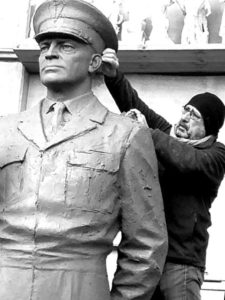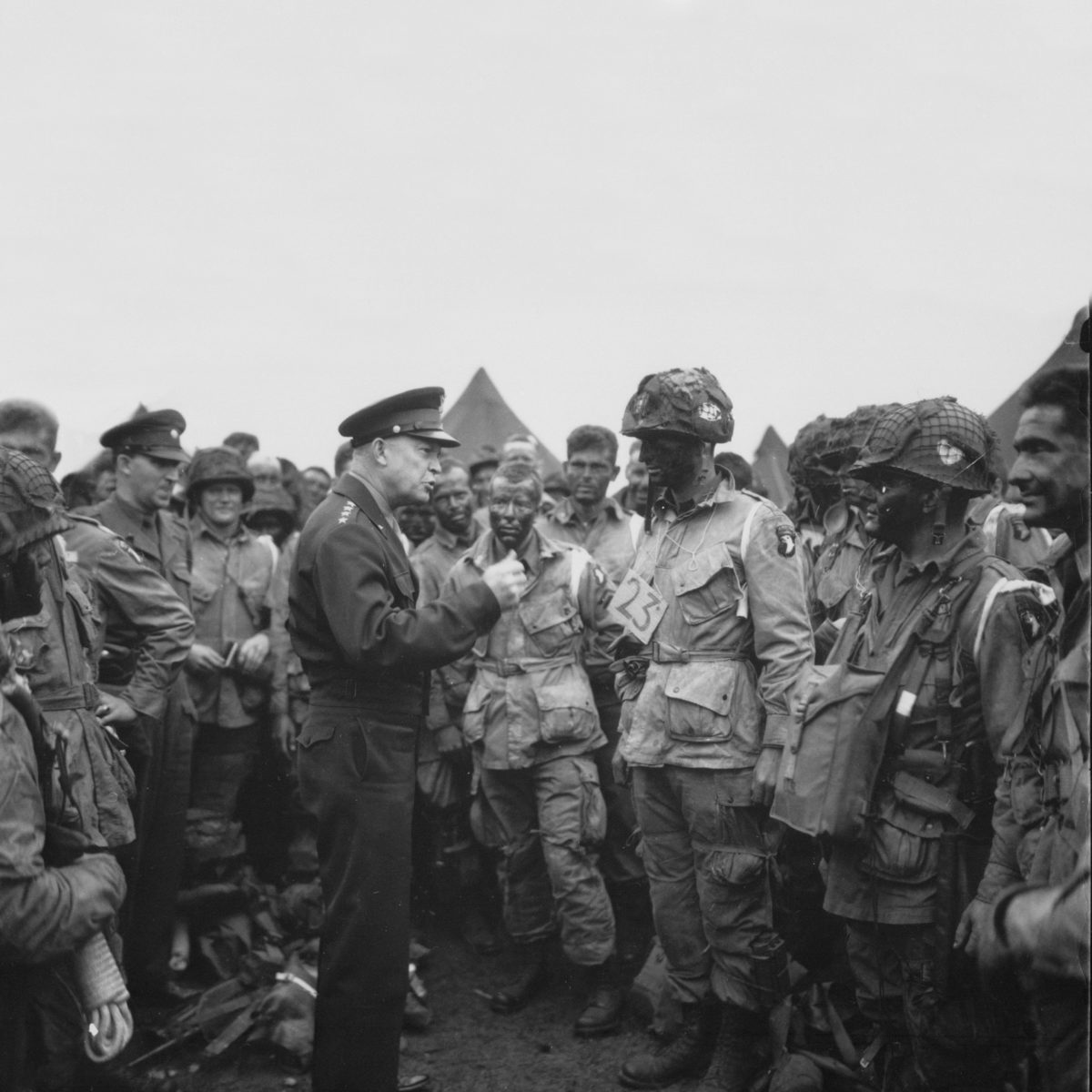The 500-pound statue of Dwight D. Eisenhower, flanked by four paratroopers, was lowered into its place on the D.C. Mall this past Saturday following funding challenges and design criticisms, including those levied by the general’s own granddaughter. Created by hand from sculptor Sergey Eylanbekov in Pietrasanta, Italy, the clay and molten bronze statues were shipped to Norfolk, Virginia, and then to D.C. this past month.
The scene famed architect Frank Gehry chose to depict is an iconic one: General Eisenhower speaking to soldiers with the 502nd Parachute Infantry Regiment of the 101st Airborne division on the eve of the Normandy invasion. The paratroopers, faces blackened for battle, stare raptly at their commander.

In a video on the Dwight D. Eisenhower Memorial page, Eylanbekov describes how he “didn’t want to make any particular person.” That it was “about soldiers and a great general doing something very fundamental … for the future, for freedom.”
“What captured me reading about this [was] that he had this certain warmth and humanity in him,” Eylanbekov observes. “And this was the thing that was indispensable, because he was not just a leader. He had this human characteristic … and I imagine that’s exactly what would be the best for the soldiers. Many of them were to die in a very short period of time.”
According to the memorial website, behind the Ike statue “a transparent stainless-steel woven tapestry frames the entire memorial within its urban context and portrays an abstract artistic depiction of the cliffs of the Normandy coastline in peacetime.” The imposing cliffs of Pointe Du Hoc were chosen, Gehry says, because “that was the point where Ike started to save the world.”
For Gehry, designing the memorial wasn’t something that he was initially interested in. However, after reading about Eisenhower’s “depth of commitment to the country, he became a model of what we should all be … I just said, ‘I’ve got to do this. I need to do this.’ ” The job took on a new meaning for him after Gehry discovered that as a young enlisted soldier in the 1950s he had served in the 3rd Infantry Division, which Eisenhower had served in during his climb up the ranks. The planning however, would stall for almost a decade.
The memorial, authorized by Congress in 1999, has had to overcome numerous budgeting hurdles – the Taiwanese government even pledged $1 million – and complaints from Eisenhower’s own family, among others. The general’s granddaughter, Susan Eisenhower, compared Gehry’s proposal to Communist-era figurines that honored “Marx, Engels, and Lenin;” there was further mention of Ho Chi Minh and Mao Zedong; and, the Washington Post reports, Susan “argued that Holocaust survivors were affronted by the similarity of the tapestries to the fences of Adolf Hitler’s death camps.”
Bruce Cole, former chairman of the national Endowment for the Humanities, too was critical of the Gehry design saying, “A great monument is an exclamation point, not a question mark. A young person coming to the Frank Gehry memorial will be bewildered by a forest of eight-story columns and a blizzard of tapestries.”
Since 2012, the design has been altered and revised before its final approval and 2017 ceremonial groundbreaking. The memorial will include three different scenes depicting Eisenhower as a child, a general, and later as the 34th U.S. president. Those tableaus will be added to the memorial in the coming weeks.
For those attached to the project, honoring the famed general and statesman was a privilege.
“My goal was … to use every bit of skill and every bit of my soul to make something meaningful for the people,” Eylanbekov said in the video. “I’m an immigrant [from Russia]. I’m a citizen of the U.S. … I feel very honored and inspired” to have sculpted this monument.
The memorial was set to be dedicated on May 8, the 75th anniversary of the end of World War II in Europe but due to coronavirus concerns it was unveiled on September 18.

